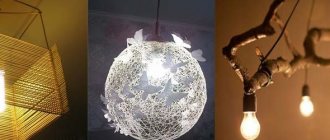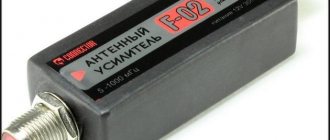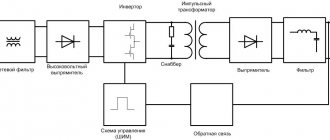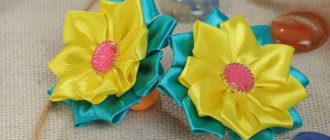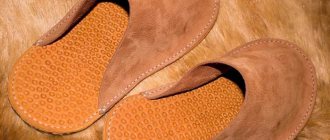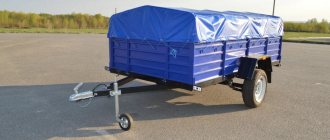The current prices for wind generators and the payback period do not correspond to the capabilities of the majority of owners of country houses and summer cottages. For residents of remote areas where there has never been network electricity, it is even more difficult to purchase such equipment, since they are deprived of information about it and cannot obtain sufficiently detailed information about the quality, characteristics and other parameters of equipment for using wind energy.
You have to make wind devices yourself, relying on experimental results or fragmentary information gleaned from various sources. Let's consider an important issue that arises when creating a windmill - the design of the blades.
Main characteristics
The performance of a wind generator depends on the number and size of the blades installed on it, as can be clearly seen from the formula:
N=pSV3/2, where
N – air flow power, which determines the power of the device;
p – air density;
S – area swept by the wind generator;
V - wind speed.
The main characteristics of this element of technical devices of this type are:
- Geometric dimensions.
According to the diagram below:
R is the radius that determines the swept area of the device;
b - width, determines the speed of a particular model;
c - thickness, depends on the material from which it is made and design features;
φ — installation angle determines the location of the plane of rotation of the blade relative to its axis;
r is the section radius or internal radius of rotation.
- Mechanical strength - determines the ability of an element to withstand loads applied to it and depends on the material used in manufacture and its design.
- Aerodynamic efficiency - determines the ability to convert the translational movement of wind energy into the rotational movement of the wind generator shaft.
- Aeroacoustic parameters – characterize the level of noise produced during operation of a wind turbine.
Design and principle of operation of a wind generator
Such technical solutions are in demand in regions where windy weather prevails; they operate using air flow, which ultimately generates an electric current. The devices operate due to the presence of blades in the design; they rotate and start the generator. The latter converts the kinetic energy of the wind into electricity, the current is supplied to the equipment consuming it and battery packs.
Industrially produced windmills and home-made windmills can be used both as a key and auxiliary voltage source. In particular, continuously operating generators serve the lighting system of the house and are responsible for heating water, regardless of the main electrical circuit.
If the object is not connected to a centralized electrical network, the power of the windmill may be sufficient to maintain the heating system, all household appliances, and light bulbs. It should be borne in mind that in the winter months, for heating maintenance, the installation productivity must be above 10 kW, in which case the power will be enough for household appliances. Wind power plants are operated in tandem with stabilizers.
How to calculate correctly
The efficiency of a wind generator is significantly influenced by the aerodynamic characteristics of the blades installed on it, therefore, before their manufacture, special calculations are made. As a result of such calculations, products are checked for compliance of the results obtained with the required parameters and other requirements imposed on them.
The wind exerts an impact on the generator blades and this force, or in other words, pressure, acts in the direction of the air flow. In turn, a lifting force acts perpendicular to the pressure force, which is what works in wind generators with a horizontal axis of rotation (shown in the diagram below).
When calculating the geometric dimensions of the blade, the width of its chord and the angle of its installation are determined, in diagram β, over the entire length of the device element.
When carrying out calculations, the finite element method is used, the essence of which is that the blade is considered as a set of individual elements that make up its composition.
The force of pressure of wind flows is directed against the movement of the blade (in the diagram it is called “true wind”) and in the diagram it is decomposed into vectors - “wind speed” and “peripheral speed”. The peripheral speed ensures the movement of the blades in the plane of rotation, while the lifting force acts in this direction.
The pressure force and lift force determine the performance of the wind generator (the formula is given in the “Main characteristics” section) and depend on the lift coefficient, as well as the drag coefficient. In addition, these coefficients are directly dependent on the geometric profile of the blade and the angle between its chord line and the direction of the air flow.
The chord line is the longest line when considering its cross-section, from the tip of the blade to its trailing edge.
The angle between the chord line and the direction of the air flow (incoming flow) is called the angle of attack (angle α).
The lift and drag coefficients are determined experimentally and recorded in special journals (atlases). The graph of lift versus angle of attack (blade shape) looks like this:
The best aerodynamic performance is achieved by similar elements with an angle α (angle of attack) equal to – 5.
Another important parameter when arranging elements is their installation angle (angle β), which is determined by the formula:
Where:
R – radius of the outer circle of rotation;
r – radius of rotation, excluding the butt and butt part;
Z is the speed of the tip of this device element.
The blade width (dimension “b”) is also an important parameter that requires appropriate calculation. The most important part is the outer part, due to the wind ring and the coverage area with which this part of the device works.
The calculation is performed using the formula:
Where:
R – outer radius of rotation;
r – internal radius of rotation, excluding the butt and butt part;
Z – tip speed.
i – number of blades.
From this formula it is clear that:
- The width is inversely proportional to the internal radius of its rotation, and which, in turn, suggests that the most optimal shape is the shape of a triangle;
- A wind generator with a small number of blades must have wider blades;
- Increasing speed reduces their width.
Speed with the indicator “5” is the most optimal, which allows you to reduce installation losses with the maximum number of blades. The figure below shows how the number of similar elements installed on a wind generator affects its speed:
High speed allows you to increase the efficiency of wind generators, while the negative factors when operating such devices will be:
- Increased noise level;
- Vibration when using one or two blades;
- Increased edge erosion;
- Difficulty starting with low wind flows.
To reduce noise levels, the tips of the blades are made pointed, and to make starting easier, the bases are made slightly wider than size “b”.
How does a generator function: the principle of converting rotational motion into electrical energy?
The wind sets the blades in a circular motion, which ensures the rotation of the wind wheel. This in turn transmits movement to the turbine. By acting on the multiplier, it begins to generate electrical energy in proportion to the force of the wind acting on the blade. The greater this force, the greater the amount of electrical energy generated.
It should be taken into account that generators that do not have a multiplier have the highest efficiency. It accelerates the movement of the axis, but at the same time consumes energy. But in certain areas where the wind flows are weak, they need to be installed, even sacrificing some of the performance.
Types of blades
Depending on the type of wind generator, the type of blades used in each specific case may vary, but the basic designs correspond to the following types.
1. Wing type - used in installations with horizontal and vertical axis of rotation and can be made of hard materials.
2. Sailing type, can be wing-shaped and made using soft materials:
3. Flat - in the form of mill blades, they combine both of the above types, and can be made of light and durable material (plywood, plastic, etc.).
Balancing the wind wheel
Once the blades are completed, you need to complete the wind wheel and balance it. This should be done in a closed building with a large area under conditions of complete calm, since vibrations of the wheel in the wind can distort the balancing results. Wheel balancing must be done as follows:
- Secure the wheel at such a height that it can move freely. The plane of the connecting mechanism must be perfectly parallel to the vertical suspension.
- Make the wheel completely static and release it. It shouldn't move. Then spin the wheel at an angle equal to the ratio of 360/number of blades, stop, release, spin again, and observe for a while.
- Tests should be carried out until the wheel rotates completely around its axis. When a released or stopped wheel continues to swing, the part of it that gravitates downwards is excessively heavy. It is necessary to sharpen the end of one of the blades.
In addition, you should find out how harmoniously the blades lie in the plane of rotation of the wheel. The wheel must be stopped. At a distance of about two millimeters from each edge of one of the blades, strengthen two strips that will not interfere with rotation. When turning the wheel, the blades should not cling to the bars.
Material selection
Various materials are used to manufacture blades; the main requirements for them are the following:
- Strength – the ability to withstand constant loads caused by wind currents;
- Light weight – increases the service life of the units and mechanisms of the device (bearings, extensions, etc.);
- Resistance to atmospheric conditions (precipitation, sunlight, ambient temperature).
All of the above requirements are met by: fiberglass, composite materials, plastic and light metals (aluminum, titanium and others).
The choice of material is made by the manufacturer, in accordance with economic feasibility, the availability of the material in the relevant market, as well as the complexity of its processing during the work process.
Wind speed
Regardless of whether you plan to buy a ready-made generator or make one yourself, wind speed will be one of the most important parameters when determining the power of the installation.
Firstly, each type of wind generator has its own initial operating speed. For most installations this is 2-3 m/s. If the wind speed is below this threshold, the generator will not work at all, and, accordingly, will not generate electricity either.
In addition to the initial speed, there is also a nominal speed, at which the wind generator reaches its rated power. For each model, the manufacturer indicates this figure separately.
However, if the speed is higher than the initial speed, but lower than the nominal speed, then the electricity generation will be significantly reduced. And in order not to be left without electricity, you should always first of all focus on the average wind speed in your region and directly on your site. You can find out the first indicator by looking at the wind map, or by looking at the weather forecast in your city, where wind speed is usually indicated.
The second figure should ideally be measured with special instruments directly in the place where the wind turbine will be located. After all, your house can be either on a hill, where the wind speed will be higher, or in a lowland, where there will be practically no wind.
In this situation, those who constantly suffer from hurricane gusts of wind are in a more advantageous position and can count on greater performance from the wind generator.
How to make it yourself
If you know how to work with various hand tools and decide to build a wind generator on your own, you can also make the blades of such a device yourself. In this case, the choice of material used for manufacturing depends on what is available, and these may be the following options:
PVC pipe
In this case, pipes used for sewer or water supply networks are of large diameter and have high strength, which is due to their use in networks with excess pressure.
Calculating the shape of the blade on your own is quite difficult, so the best option is to find a template of the required size. To do this, you can use specialized literature, magazines or Internet resources, which contain a large number of products of various configurations and geometric dimensions.
According to the template, dimensions are applied to the surface of the pipe, after which, using a cutting tool, the blades are cut out, as in the figure below.
The side edges are cleaned, burrs and irregularities are removed. After the required quantity has been produced, the blades are combined into a single unit and placed on the shaft of the wind generator.
Made from fiberglass
When using fiberglass (fiberglass), first a template is made from wood, from which the blade elements are subsequently made. As a rule, in this case, they are made hollow; if necessary, it is possible to install reinforcing spars and fill the voids with various components.
When creating a template, the surface of the blade is conditionally divided along the horizontal axis, after which a template for the lower and a template for the upper parts are obtained. Based on the manufactured base (template), which can be called a matrix, individual elements of the blade are manufactured. To do this, several layers of fiberglass are applied over the matrix, using epoxy resin and a hardener, which must harden. After hardening, spars and a seal (in the tail section) are installed inside the surface of the manufactured product. The sealant is laid if necessary, which must be confirmed by appropriate calculations or justification given in the technical literature where the template was taken.
The manufactured parts are connected to each other using glue; in the butt part, a shank is mounted, with which the blade is attached to the wind generator shaft.
When performing work you will need the following tool:
- Hacksaws of various types, depending on the material used;
- Metal scissors or hand-held electric tools (jigsaw, grinder, etc.);
- Markers and scribers used for marking manufactured parts;
- Abrasive materials: sandpaper, grinding wheels for an angle grinder, files - used for surface treatment.
alternative energy
Wind load can also bring benefits, for example, by converting wind power in wind generators. So, at a wind speed of V = 10 m/sec, with a circle diameter of 1 meter, the windmill has blades d = 1.13 m and produces about 200–250 W of useful power. An electric plow, consuming such an amount of energy, will be able to plow about half a hundred (50 m²) of land on a personal plot in one hour.
If you use a large wind generator - up to 3 meters, and an average air flow speed of 5 m/sec, you can get 1-1.5 kW of power, which will completely provide a small country house with free electricity. With the introduction of the so-called “green” tariff, the payback period for equipment will be reduced to 3–7 years and, in the future, can bring net profit.
Where can I buy?
A wind generator and its components are a specialized product that is not sold in regular retail chains, which means there is not a wide range of companies selling it.
If there is a need to purchase a set of blades or their individual elements, it is best to contact a company that produces such equipment. If you have and operate a generator of a certain brand, you should contact its manufacturer, which will avoid installation difficulties, and will also preserve the technical characteristics of the device and will not violate its operating conditions.
When making a wind generator on your own, you can purchase factory-made blades, which are sold by specialized trade organizations and online stores.
Which wind turbines to choose
Well, for those who live far from substations and 0.4 kV overhead lines, it is worth purchasing the most powerful models of wind turbines that you can afford. Since you will get no more than 15% of the power indicated in the pictures.
Another category of consumers, quite rightly, makes a choice not in favor of Chinese factory models, but, on the contrary, prefers homemade windmills from self-taught craftsmen. This also has its benefits.
For the most part, the inventors of such devices are competent and responsible guys. And in almost 100% of cases, you can return the installation to them without any problems if something goes wrong or it needs to be repaired. There will certainly be no problems with this.
Industrial Chinese windmills have a prettier appearance, of course. And if you still decide to buy it, immediately after checking it with an electric drill, do preventative repairs and replace Chinese scrap metal with bearings with high-quality lubricant.
If you have large bird nesting areas nearby, it wouldn't hurt to purchase an extra set of blades.
Chicks sometimes get caught in the spinning “mini mill”. Plastic blades break and metal blades bend.
And I would like to end with wisdom from those users who did not listen to all the arguments and came face to face with all the problems described above. Remember, the most expensive weather vane for a home is a wind generator!
Average prices
The cost of the blades depends on the power of the wind generator on which they are installed, the material from which they are made, the country and brand of the manufacturer, as well as the place of purchase.
Thus, the cost of a set of blades for wind generators brand “Exmork” (Zonhan) manufactured in China, depending on the power of the device, is:
- For P=1.0 kW – from 13,000.00 rubles;
- For P=1.5 kW – from 22,000.00 rubles;
- For P=2.0 kW – from 23,000.00 rubles.
- For P=3.0 kW – from 34,000.00 rubles.
Blades for a wind generator brand SWG FD2.7-500 (China), are sold at a price of 7500.00 rubles.
Blades for generators of the “RV” type (Russia), depending on the geometric dimensions, are sold at the following prices:
- 1.2 meters – from 4500.00 rubles;
- 2.6 meters – from 12,000.00 rubles;
- 3.0 meters – from 15,000.00 rubles;
- 4.0 meters – from 29,000.00 rubles;
- 6.0 meters – from 75,000.00 rubles;
- 7.5 meters – 135,000.00 rubles.
Introduction
Concern for the environment and one's own wallet prompted the bright minds of humanity to invent and implement new methods of energy production, the source of which would be inexhaustible resources: the sun, water and wind.
The use of each such source has its own advantages and disadvantages, but wind energy is considered the most affordable and effective. Of course, nature imposes certain restrictions on the use of wind generators, and the material costs of generating 1 kW of electricity from solar and wind energy are approximately comparable. But in northern latitudes, especially in coastal regions, the use of wind generators is beyond competition.
The question of the feasibility of the installation depends on the average wind speed in the region. Starting from 4 m/s, installing a wind generator is considered advisable, and at 9-12 m/s it operates with maximum efficiency. But the power of a wind generator depends not only on the speed of the wind flow (Scheme 1), but also on the diameter of the rotor and the area of the blades (Scheme 2).
Meaning of the procedure
If you neglect to calculate the load of air movement, you can, as they say, ruin the whole business and endanger people's lives.
If there are usually no difficulties with the pressure of snow on the walls of buildings - this load is visible, you can weigh it and even touch it - then with wind it is much more complicated. It is not visible, it is very difficult to predict it intuitively. Yes, of course, the wind has some impact on load-bearing structures, and in some cases it can even be destructive: it twists advertising banners, overwhelms fences and wall frames, and tears off roofs. But how is it possible to predict and take into account this force? Is it, in principle, calculable?
Gives in! However, this is a tedious task, and non-professionals really don’t like to calculate the wind load. There is a clear explanation for this: the importance of calculations is a very responsible and difficult matter, much more difficult than calculating the snow load. If in the joint venture specially dedicated to this, only two and a half pages are devoted to snow load, then the wind calculation is three times larger! Plus, a mandatory appendix is assigned to it, placed on 19 pages indicating aerodynamic coefficients.
If citizens of Russia are still lucky with this, then for residents of Belarus it is even more difficult - the document TKP_EN_1991−1−4−2О09 “Wind Impacts”, which regulates standards and calculations, has a volume of 120 pages!
Few people want to understand the Eurocode (EN_1991−1−4−2О09) on the scale of construction of a private structure regarding wind influences at home over a cup of tea. Those who are professionally interested are recommended to download and study it thoroughly, surrounded by a specialist consultant. Otherwise, due to the wrong approach and understanding, the consequences of the calculations can be disastrous.
